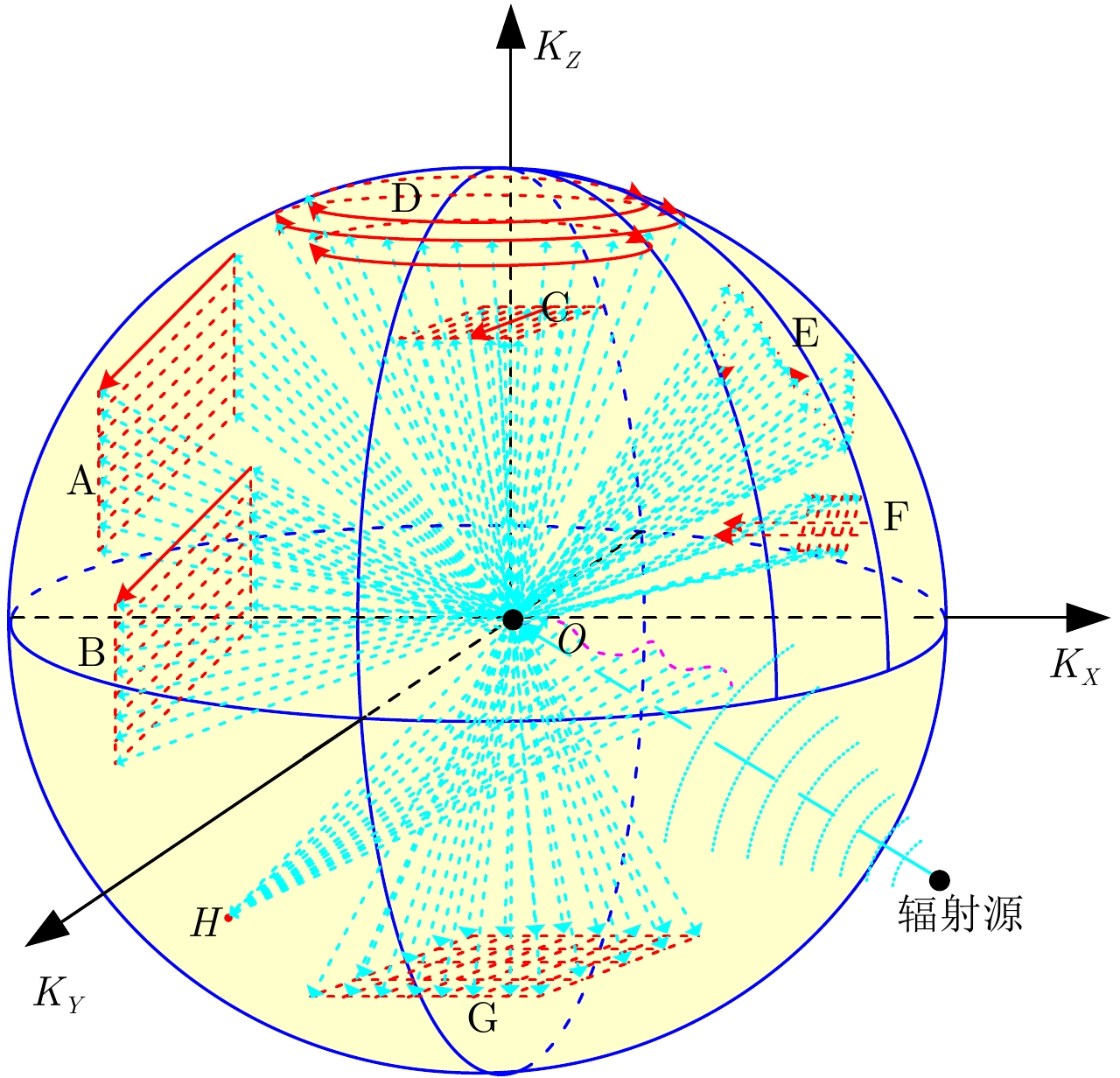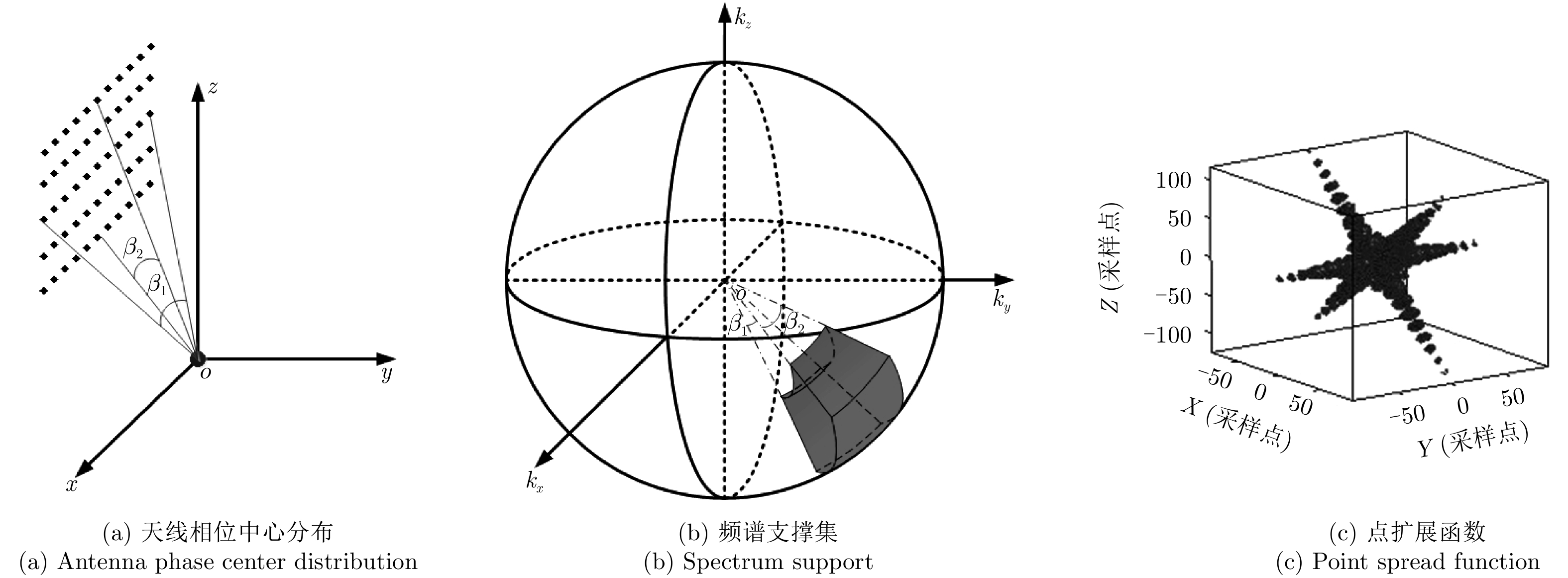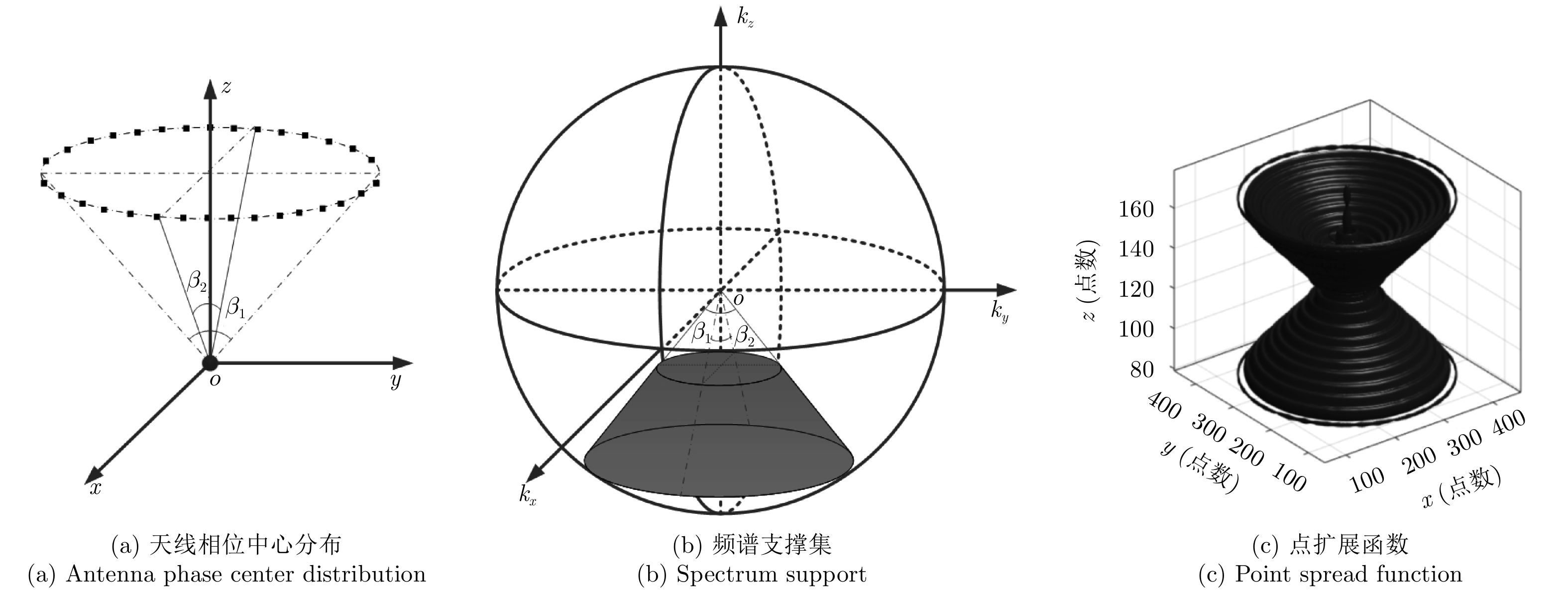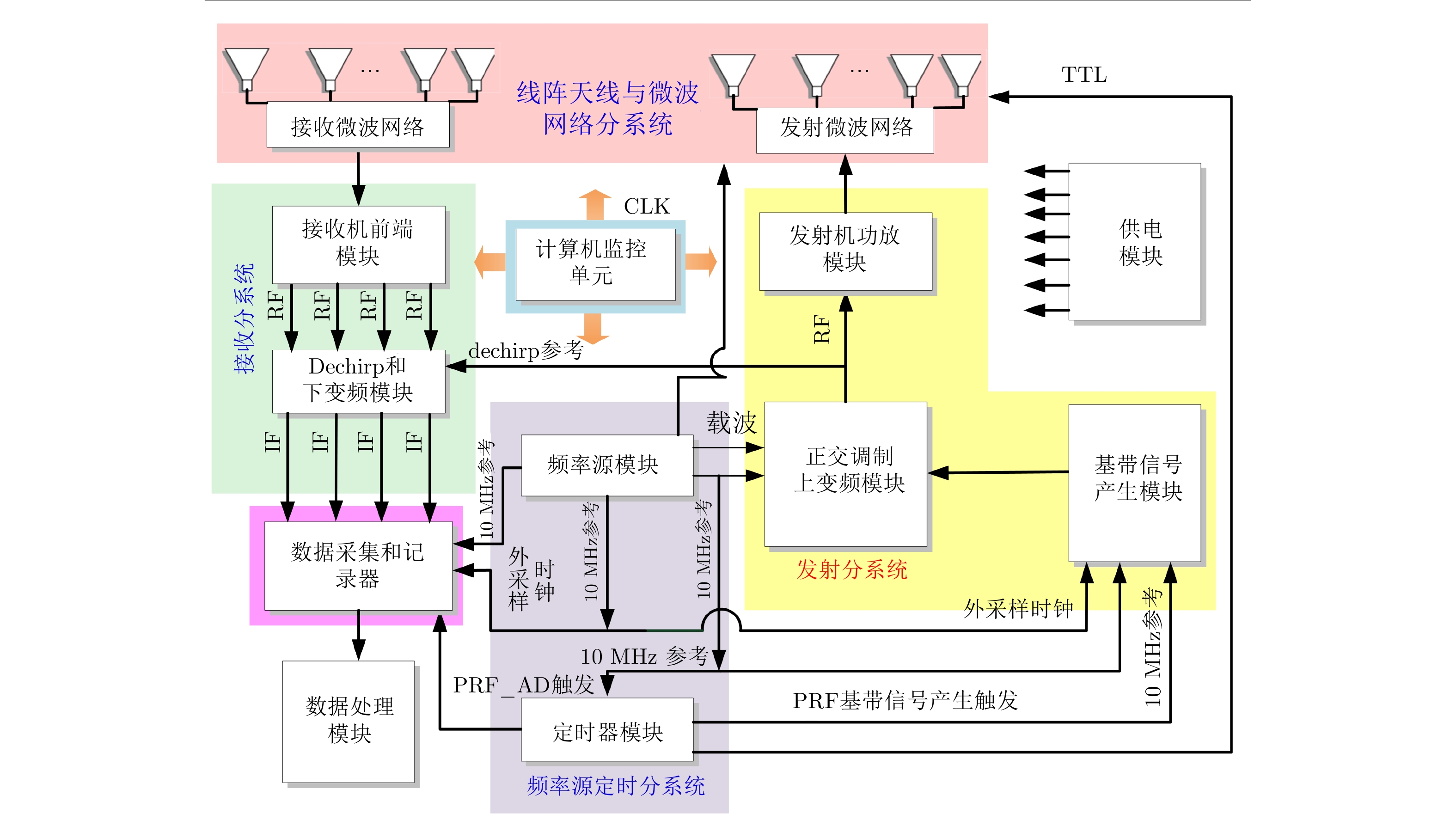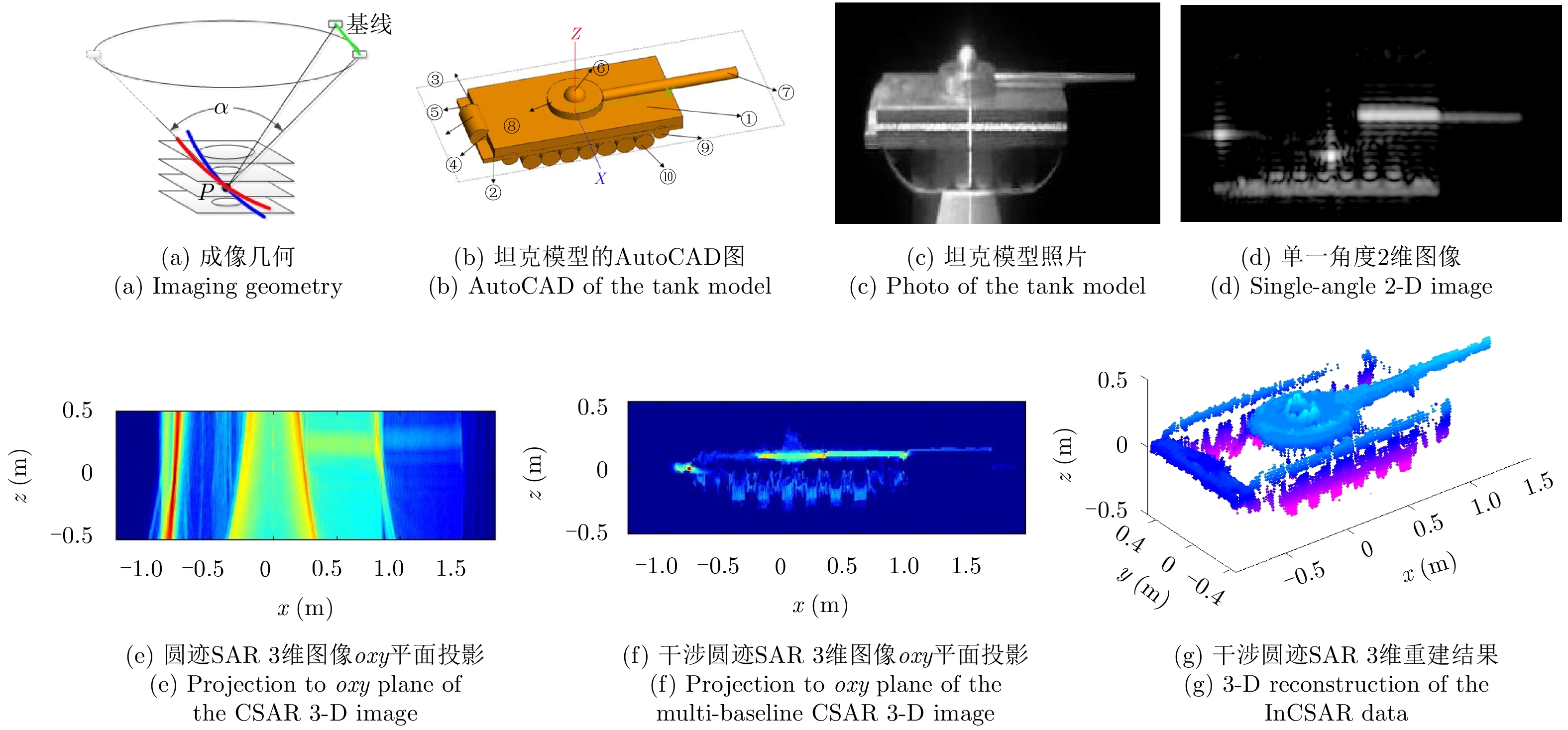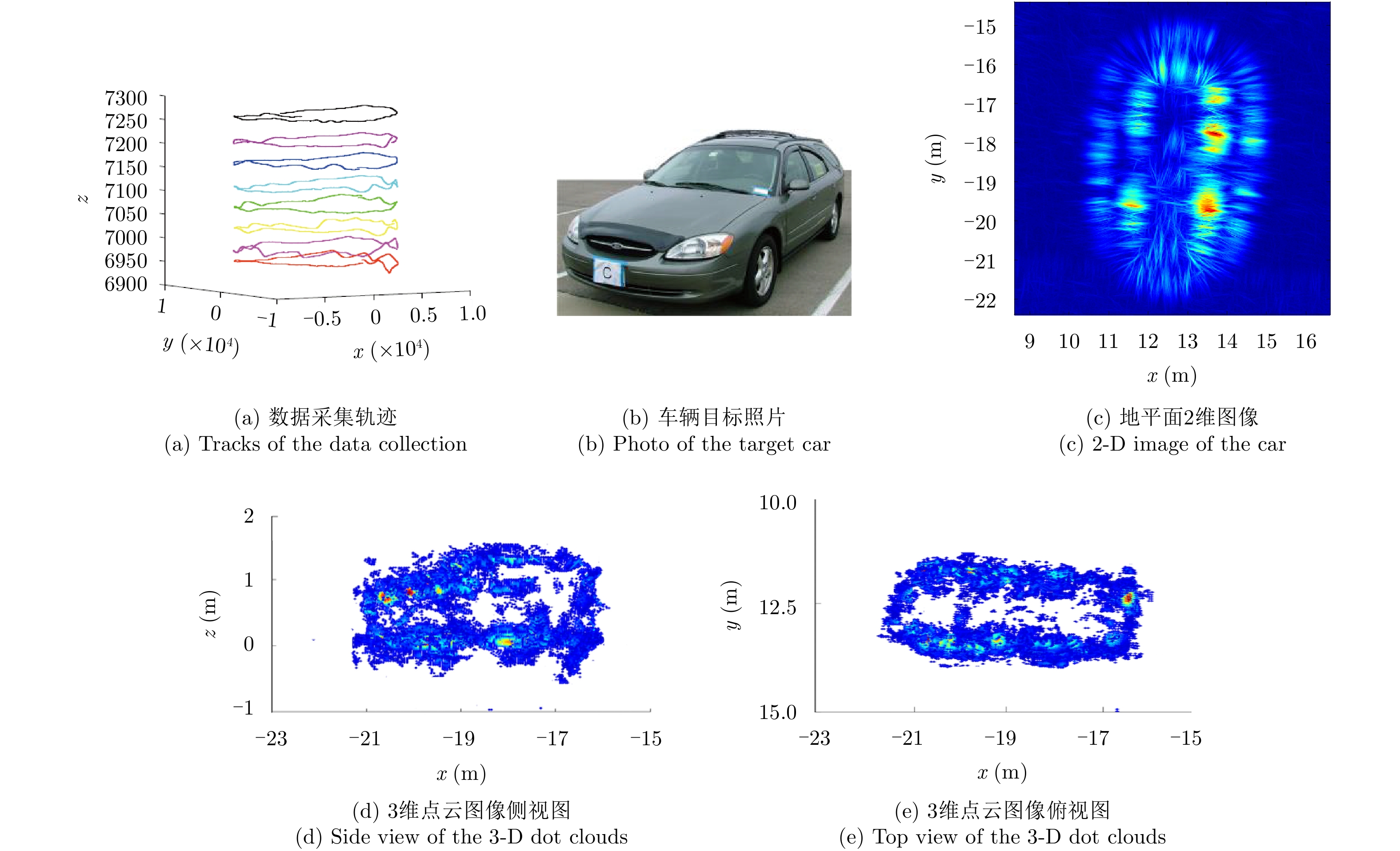| [1] |
Knaell K. Three-dimensional SAR from curvilinear apertures[C]. Proceedings of SPIE 2230, Algorithms for Synthetic Aperture Radar Imagery, Orlando, FL, USA, 1994.
|
| [2] |
Soumekh M. Reconnaissance with slant plane circular SAR imaging[J]. IEEE Transactions on Image Processing, 1996, 5(8): 1252–1265. DOI: 10.1109/83.506760 |
| [3] |
Bryant M L, Gostin L L, and Soumekh M. 3-D E-CSAR imaging of a T-72 tank and synthesis of its SAR reconstructions[J]. IEEE Transactions on Aerospace and Electronic Systems, 2003, 39(1): 211–227. DOI: 10.1109/TAES.2003.1188905 |
| [4] |
Fortuny J. Efficient algorithms for three-dimensional near-field synthetic aperture radar imaging[D].[Ph.D. dissertation], University of Karslruhe, 2001.
|
| [5] |
Fortuny J and Lopez-Sanchez J M. Extension of the 3-D range migration algorithm to cylindrical and spherical scanning geometries[J]. IEEE Transactions on Antennas and Propagation, 2001, 49(10): 1434–1444. DOI: 10.1109/8.954932 |
| [6] |
Reigber A and Moreira A. First demonstration of airborne SAR tomography using multibaseline L-band data[J]. IEEE Transactions on Geoscience and Remote Sensing, 2000, 38(5): 2142–2152. DOI: 10.1109/36.868873 |
| [7] |
谭维贤. 合成孔径雷达三维成像理论与方法研究[D]. [博士论文], 中国科学院电子学研究所, 2009.
Tan Wei-xian. Study on theory and algorithms for three-dimensional synthetic aperture radar imaging[D]. [Ph.D. dissertation], Institute of Electronics, Chinese Academy of Sciences, 2009.
|
| [8] |
洪文, 丁赤飚, 王彦平, 等. 确定微波三维成像中相位中心时空分布的方法[P]. 中国, CN201310699025, 2014.
Hong Wen, Ding Chi-biao, Wang Yan-ping, et al.. Method for confirming space-time distribution of phase center in microwave three-dimensional imaging[P]. CN, CN201310699025, 2014.
|
| [9] |
Chan T K, Kuga Y, and Ishimaru A. Experimental studies on circular SAR imaging in clutter using angular correlation function technique[J]. IEEE Transactions on Geoscience and Remote Sensing, 1999, 37(5): 2192–2197. DOI: 10.1109/36.789616 |
| [10] |
She Z, Gray D A, Bogner R E, et al.. Three-dimensional SAR imaging via multiple pass processing[C]. Proceedings of IEEE 1999 International Geoscience and Remote Sensing Symposium, Hamburg, Germany, 1999, 5: 2389–2391. DOI: 10.1109/IGARSS.1999.771519. |
| [11] |
Fornaro G, Serafino F, and Soldovieri F. Three-dimensional focusing with multipass SAR data[J]. IEEE Transactions on Geoscience and Remote Sensing, 2003, 41(3): 507–517. DOI: 10.1109/TGRS.2003.809934 |
| [12] |
Fornaro G and Serafino F. Imaging of single and double scatterers in urban areas via SAR tomography[J]. IEEE Transactions on Geoscience and Remote Sensing, 2006, 44(12): 3497–3505. DOI: 10.1109/TGRS.2006.881748 |
| [13] |
Zhu X X and Bamler R. Super-resolution power and robustness of compressive sensing for spectral estimation with application to spaceborne tomographic SAR[J]. IEEE Transactions on Geoscience and Remote Sensing, 2012, 50(1): 247–258. DOI: 10.1109/TGRS.2011.2160183 |
| [14] |
Budillon A, Evangelista A, and Schirinzi G. Three-dimensional SAR focusing from multipass signals using compressive sampling[J]. IEEE Transactions on Geoscience and Remote Sensing, 2011, 49(1): 488–499. DOI: 10.1109/TGRS.2010.2054099 |
| [15] |
Aguilera E, Nannini M, and Reigber A. Wavelet-based compressed sensing for SAR tomography of forested areas[J]. IEEE Transactions on Geoscience and Remote Sensing, 2013, 51(12): 5283–5295. DOI: 10.1109/TGRS.2012.2231081 |
| [16] |
Aguilera E, Nannini M, and Reigber A. Multisignal compressed sensing for polarimetric SAR tomography[J]. IEEE Geoscience and Remote Sensing Letters, 2012, 9(5): 871–875. DOI: 10.1109/LGRS.2012.2185482 |
| [17] |
Gierull C H. On a concept for an airborne downward-looking imaging radar[J]. International Journal of Electronics and Communications, 1999, 53(6): 295–304.
|
| [18] |
Giret R, Jeuland H, and Enert P. A study of a 3D-SAR concept for a millimeter wave imaging radar onboard an UAV[C]. Proceedings of the 1st European Radar Conference, Amsterdam, The Netherlands, 2004: 201–204.
|
| [19] |
Nouvel J, Jeuland H, Bonin G, et al.. A Ka band imaging radar: DRIVE on board ONERA motorglider[C]. Proceedings of 2006 IEEE International Symposium on Geoscience and Remote Sensing, Denver, USA, 2006: 134–136. DOI: 10.1109/IGARSS.2006.39. |
| [20] |
Klare J, Weiß M, Peters O, et al.. ARTINO: A new high resolution 3D imaging radar system on an autonomous airborne platform[C]. Proceedings of 2006 IEEE International Symposium on Geoscience and Remote Sensing, Denver, USA, 2006: 3842–3845.
|
| [21] |
Palm S, Oriot H M, and Cantalloube H M. Radargrammetric DEM extraction over urban area using circular SAR imagery[J]. IEEE Transactions on Geoscience and Remote Sensing, 2012, 50(11): 4720–4725. DOI: 10.1109/TGRS.2012.2191414 |
| [22] |
Ponce O, Prats P, Rodriguez-Cassola M, et al.. Processing of circular SAR trajectories with fast factorized back-projection[C]. Proceedings of 2011 IEEE International Geoscience and Remote Sensing Symposium, Vancouver, Canada, 2011: 3692–3695.
|
| [23] |
Ponce O, Prats-Iraola P, Scheiber R, et al. First airborne demonstration of holographic SAR tomography with fully polarimetric multicircular acquisitions at L-band[J]. IEEE Transactions on Geoscience and Remote Sensing, 2016, 54(10): 6170–6196. DOI: 10.1109/TGRS.2016.2582959 |
| [24] |
王斌. 多基线SAR三维成像的参数化模型和方法研究[D]. [博士论文], 中国科学院研究生院, 2010.
Wang Bin. Parametric algorithms of multi-baseline synthetic aperture radar[D]. [Ph.D. dissertation], University of Chinese Academy of Sciences, 2010.
|
| [25] |
Wang B, Wang Y P, Hong W, et al. Studies on MB-SAR 3D imaging algorithm using Yule-walker method[J]. Science China Information Sciences, 2010, 53(9): 1848–1859. DOI: 10.1007/s11432-010-4040-7 |
| [26] |
毕辉. 基于稀疏信号处理的SAR/TomoSAR成像方法研究[D]. [博士论文], 中国科学院大学, 2017.
Bi Hui. Study on sparse signal processing based SAR/TomoSAR imaging methods[D]. [Ph.D. dissertation], University of Chinese Academy of Sciences, 2017.
|
| [27] |
Bi H, Zhang B C, and Hong W. Matrix completion-based distributed compressive sensing for polarimetric SAR tomography[J]. Science China Information Sciences, 2015, 58(11): 1–3. DOI: 10.1007/S11432-015-5395-6 |
| [28] |
Bi H, Zhang B C, and Hong W. Lq regularization-based unobserved baselines’ data estimation method for tomographic synthetic aperture radar inversion[J]. Journal of Applied Remote Sensing, 2016, 10(3): 035014. DOI: 10.1117/1.JRS.10.035014 |
| [29] |
Bi H, Liu J G, Zhang B C, et al. Baseline distribution optimization and missing data completion in wavelet-based CS-TomoSAR[J]. Science China Information Sciences, 2018, 61(4): 042302. DOI: 10.1007/s11432-016-9068-y |
| [30] |
彭学明. 机载下视稀疏阵列3D SAR分布式大场景回波模拟与成像处理算法研究[D]. [博士论文], 中国科学院大学, 2014.
Peng Xue-ming. Airborne downward looking sparse linear array three dimensional synthetic aperture radar distriubted large imaging scene echo simualtion and imaging algorithm research[D]. [Ph.D. dissertation], University of Chinese Academy of Sciences, 2014.
|
| [31] |
Peng X M, Hong W, Wang Y P, et al. Polar format imaging algorithm with wave-front curvature phase error compensation for airborne DLSLA three-dimensional SAR[J]. IEEE Geoscience and Remote Sensing Letters, 2014, 11(6): 1036–1040. DOI: 10.1109/LGRS.2013.2282335 |
| [32] |
Peng X M, Wang Y P, Hong W, et al. Autonomous Narigation airborne forward looking SAR high precision pseudopolar format imaging with ourlapped sub-aperture algorithm[J]. Remote Sensing, 2013, 5(11).
|
| [33] |
Peng X M, Wang Y P, Hong W, et al. Airborne downward looking sparse linear array 3-D SAR heterogeneous parallel simulation[J]. Remote Sensing, 2013, 5(10): 5304–5329. DOI: 10.3390/rs5105304 |
| [34] |
韩阔业. 阵列天线下视3D SAR多通道幅相误差校正成像方法研究[D]. [硕士论文], 中国科学院研究生院, 2011.
Han Kuo-ye. Study on multi-channel amplitude-phase errors calibration and imaging methods of downward-looking 3D-SAR based on array antennas[D]. [Master dissertation], University of Chinese Academy of Sciences, 2011.
|
| [35] |
Han K Y, Wang Y P, Tan W X, et al. Efficient pseudopolar format algorithm for down-looking linear-array SAR 3-D imaging[J]. IEEE Geoscience and Remote Sensing Letters, 2015, 12(3): 572–576. DOI: 10.1109/LGRS.2014.2351792 |
| [36] |
Han K Y, Wang Y P, Chang X K, et al. Generalized pseudopolar format algorithm for radar imaging with highly suboptimal aperture length[J]. Science China Information Sciences, 2015, 58(4): 1–15. DOI: 10.1007/S11432-014-5224-3 |
| [37] |
鲍慊. 三维合成孔径雷达稀疏成像方法研究[D]. [博士论文], 中国科学院大学, 2017.
Bao Qian. Study on sparse imaging algorithms for three-dimensional synthetic aperture radar[D]. [Ph.D. dissertation], University of Chinese Academy of Sciences, 2017.
|
| [38] |
Bao Q, Peng X M, Wang Z R, et al. DLSLA 3-D SAR imaging based on reweighted gridless sparse recovery method[J]. IEEE Geoscience and Remote Sensing Letters, 2016, 13(6): 841–845. DOI: 10.1109/LGRS.2016.2550057 |
| [39] |
Bao Q, Peng X M, Lin Y, et al. Suboptimal aperture radar imaging by combination of pseudo-polar formatting and gridless sparse recovery method[J]. Electronics Letters, 2016, 52(9): 765–766. DOI: 10.1049/el.2016.0234 |
| [40] |
Bao Q, Jiang C L, Lin Y, et al. Measurement matrix optimization and mismatch problem compensation for DLSLA 3-D SAR cross-track reconstruction[J]. Sensors, 2016, 16(8): 1333. DOI: 10.3390/s16081333 |
| [41] |
Bao Q, Peng X M, Wang Y P, et al. Downward looking sparse linear array 3D SAR imaging algorithm based on back-projection and convex optimization[J]. Journal of Electronics( China) , 2014, 31(4): 298–309. DOI: 10.1007/s11767-014-4095-5 |
| [42] |
杨晓琳. 线阵成像雷达系统设计及幅相误差一致性校正方法研究[D]. [博士论文], 中国科学院研究生院, 2014.
Yang Xiao-lin. Research on system design and amplitude/phase errors correction for linear array imaging radar[D]. [Ph.D. dissertation], University of Chinese Academy of Sciences, 2014.
|
| [43] |
Yang Xiao-lin, Tan Wei-xian, Qi Yao-long, et al. Amplitude and phase errors correction for array 3D SAR system based on single prominent point like target echo data[J]. Journal of Radars, 2014, 3(4): 409–418. DOI: 10.3724/SP.J.1300.2014.14037 |
| [44] |
丁振宇, 谭维贤, 王彦平, 等. 基于波数域子孔径的机载三维SAR偏航角运动误差补偿[J]. 雷达学报, 2015, 4(4): 467–473. DOI: 10.12000/JR15016Ding Zhen-yu, Tan Wei-xian, Wang Yan-ping, et al. Yaw angle error compensation for airborne 3-D SAR based on wavenumber-domain subblock[J]. Journal of Radars, 2015, 4(4): 467–473. DOI: 10.12000/JR15016 |
| [45] |
丁振宇. 机载下视觉阵列三维SAR运动补偿方法研究[D]. [博士论文], 中国科学院大学, 2015.
Ding Zhen-yu. Research on airborne downward looking array three dimensional synthetic aperture radar motion compensation method[D]. [Ph.D. dissertation], University of Chinese Academy of Sciences, 2015.
|
| [46] |
林赟. 圆迹合成孔径雷达成像算法研究[D]. [博士论文], 中国科学院研究生院, 2011.
Lin Yun. Study on algorithms for circular synthetic aperture radar imaging[D]. [Ph.D. dissertation], University of Chinese Academy of Sciences, 2011.
|
| [47] |
Lin Yun, Tan Wei-xian, Hong Wen, et al. Polar format algorithm for circular synthetic aperture radar[J]. Journal of Electronics& Information Technology, 2010, 32(12): 2802–2807. DOI: 10.3724/SP.J.1146.2010.00003 |
| [48] |
Lin Y, Hong W, Tan W X, et al. Extension of range migration algorithm to squint circular SAR imaging[J]. IEEE Geoscience and Remote Sensing Letters, 2011, 8(4): 651–655. DOI: 10.1109/LGRS.2010.2098843 |
| [49] |
洪文, 林赟, 谭维贤, 等. 地球同步轨道圆迹SAR研究[J]. 雷达学报, 2015, 4(3): 241–253. DOI: 10.12000/JR15062Hong Wen, Lin Yun, Tan Wei-xian, et al. Study on geosynchronous circular SAR[J]. Journal of Radars, 2015, 4(3): 241–253. DOI: 10.12000/JR15062 |
| [50] |
刘启. 地球同步轨道圆迹SAR成像方法研究[D]. [博士论文], 中国科学院电子学研究所, 2012: 1–18.
Liu Qi. Investigation on the imaging methods for geosynchronous circular SAR[D]. [Ph.D. dissertation], Institute of Electronics, Chinese Academy of Sciences, 2012: 1–18.
|
| [51] |
Liu Q, Hong W, Tan W X, et al. An improved polar format algorithm with performance analysis for geosynchronous circular SAR 2D imaging[J]. Progress in Electromagnetics Research, 2011, 119: 155–170. DOI: 10.2528/PIER11060503 |
| [52] |
|
| [53] |
刘婷. 基于DEM提取技术的机载圆迹SAR三维成像方法研究[D]. [硕士论文], 中国科学院大学, 中国科学院研究生院, 2012.
Liu Ting. Three-dimensional imaging Based on the technique of DEM extraction in Airborne Circular SAR[D]. [Master dissertation], University of Chinese Academy of Sciences, 2012.
|
| [54] |
Lin Y, Hong W, Tan W X, et al. Interferometric circular SAR method for three-dimensional imaging[J]. IEEE Geoscience and Remote Sensing Letters, 2011, 8(6): 1026–1030. DOI: 10.1109/LGRS.2011.2150732 |
| [55] |
侯丽英. 干涉圆迹SAR的典型目标全方位三维重建方法研究[D]. [硕士论文], 中国科学院大学, 2016.
Hou Li-ying. Interferometric circular SAR all-around 3D reconstruction method study on typical target[D]. [Master dissertation], University of Chinese Academy of Sciences, 2016.
|
| [56] |
侯丽英, 林赟, 洪文. 干涉圆迹SAR的目标三维重建方法研究[J]. 雷达学报, 2016, 5(5): 538–547. DOI: 10.12000/JR16009Hou Li-ying, Lin Yun, and Hong Wen. Three-dimensional reconstruction method study based on interferometric circular SAR[J]. Journal of Radars, 2016, 5(5): 538–547. DOI: 10.12000/JR16009 |
| [57] |
Bao Q, Lin Y, Hong W, et al. Holographic SAR tomography image reconstruction by combination of adaptive imaging and sparse Bayesian inference[J]. IEEE Geoscience and Remote Sensing Letters, 2017, 14(8): 1248–1252. DOI: 10.1109/LGRS.2017.2704601 |
| [58] |
乞耀龙. 近景微波三维成像模型与方法研究[D]. [博士论文], 中国科学院研究生院, 2012.
Qi Yao-long. Study on imaging model and algorithms for near range three-dimensional microwave imaging[D]. [Ph.D. dissertation], University of Chinese Academy of Sciences, 2012.
|




 Submit Manuscript
Submit Manuscript Peer Review
Peer Review Editor Work
Editor Work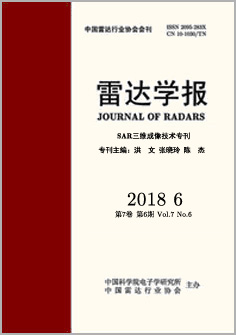





 DownLoad:
DownLoad:
